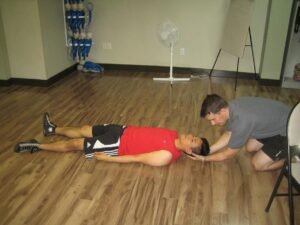The brain operates by conducting electrical signals via the nerve cells. A seizure occurs once there is a gush in the electrical activity. This results to various physical symptoms such as muscular contractions, blackouts and visual disturbances. Seizures can affect the whole brain but once it occurs in one area, it is called as a partial seizure.
A partial seizure can occur due to various reasons such as brain tumors, epilepsy, infections, low blood sugar or heat stroke. The seizure cannot be treated and must be allowed to run its full course. You can reduce the incidence of partial seizures by determining the underlying cause. Many who experience seizures can lead normal lives without treatment.
Seizure types
All seizures are physical effects of the surge of electrical activity within the brain. The electrical disturbance can lead to various physical symptoms. This is true with a partial seizure that is localized in just one part of the brain. Take note that this is called a focal seizure but can progress into a generalized seizure which affects the entire brain.
A partial seizure is categorized in two types:
- Simple partial seizure lasts for a minute or less and the individual will not lose consciousness and able to remember what happened after the seizure has passed.
- Complex partial seizure involves loss of consciousness and unable to recall what happened. This can last for a minute or two and can be preceded with feelings of nausea or uneasiness.

Symptoms of a partial seizure
Since a partial seizure only affects one part of the brain, the symptoms tend to vary depending on the particular event. In case the disturbance occurs in the part of the brain that governs vision, the individual will have hallucinations or see bright lights.
Possible symptoms
- Muscle contraction and relaxation
- Contractions on one side of the body
- Abdominal pain
- Unusual head or eye movements
- Numbness or tingling
- Rapid heart rate
- Sweating
- Automatism or repetitive movements
- Flushed face
- Nausea
- Blackouts
- Dilated pupils or visual changes
- Mood changes
Causes of partial seizures
There are various conditions and situations that can trigger seizures of any type. In some cases, the cause is unknown. The possible causes of partial seizures include the following:
- Epilepsy
- High blood pressure
- Kidney or liver failure
- Use of prohibited drugs
- Head injuries
- Brain infection such as meningitis
- Stroke
- Congenital brain defects
- Low blood sugar
- Poisoning
- Heat stroke
- Phenylketonuria
- Withdrawal from alcohol or drugs
Treatment for partial seizures
A partial seizure could not be treated once it is currently taking place. It should be allowed to run its course while making sure that the individual is safe. In case the seizures are recurring, medication can be given to prevent them.
When an individual is having a seizure of any type, you have to keep other people and objects out of way until it is over. The muscle contractions will cause the individual to lash out, thus harming themselves. Clearing the area will reduce the risk for injury. To learn to recognize and manage a seizure attack, register for a first aid and CPR course with a credible provider near you.
